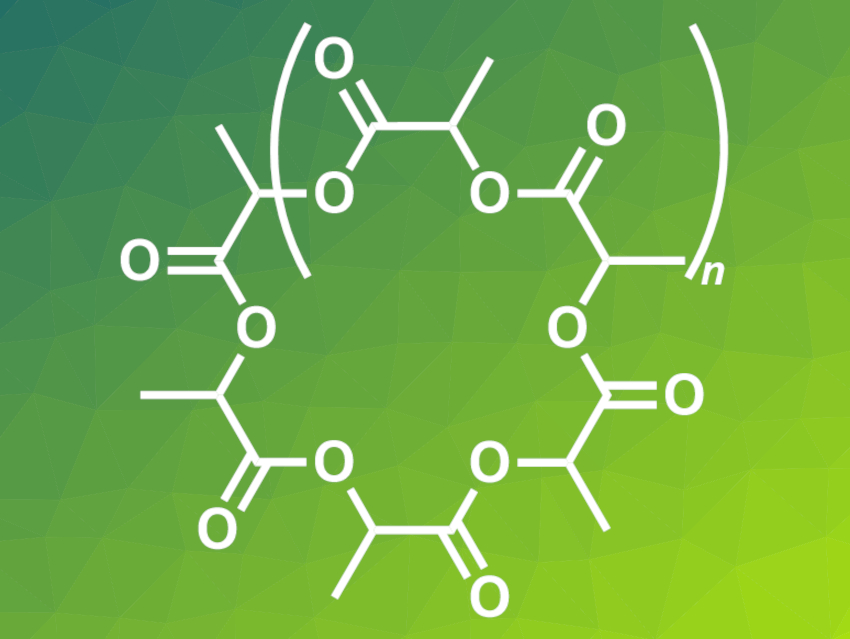Polylactide (PLA) is a more sustainable alternative to polymers made from fossil resources. The properties of the material depend on the molar mass. They are also affected by whether the polymer is linear or cyclic. The cyclic form of poly(lactide), called cPLA (pictured), has, e.g., a higher thermal stability and crystallinity than its linear counterpart. However, the synthesis of pure cPLA with high molar masses is challenging.
Charlotte K. Williams, University of Oxford, UK, Polly L. Arnold, University of Edinburgh, UK, and colleagues have developed Ce(III) complexes with N-heterocyclic carbene (NHC) ligands as homogeneous catalysts for the synthesis of high-molar-mass cPLA. The team prepared three potential catalysts for the ring-opening polymerization of lactide, one Ce(III) complex with three unsaturated NHC ligands (featuring one 3,5-di-tert-butyl-2-hydroxyphenyl and one isopropyl substituent each), the analogous Ce(III) complex with saturated NHC ligands, and an aryloxy-protected version of the free NHC ligand as an organocatalyst.
They found that both the Ce(III) complex with saturated and that with unsaturated NHC ligands were highly active in cPLA synthesis. According to the researchers, the saturated version is the most active catalyst for the synthesis of cPLA reported so far. The catalyst allows the preparation of polymers with high molar masses at low catalyst loadings. The free NHC organocatalyst also promotes the polymerization reaction but requires much higher loadings.
- Ultrarapid Cerium(III)–NHC Catalysts for High Molar Mass Cyclic Polylactide,
Ryan W. F. Kerr, Paul M. D. A. Ewing, Sumesh K. Raman, Andrew D. Smith, Charlotte K. Williams, Polly L. Arnold,
ACS Catal. 2021.
https://doi.org/10.1021/acscatal.0c04858


